外研版2012新版七年级下Module 1 Unit 2 Are they yours?
文档属性
| 名称 | 外研版2012新版七年级下Module 1 Unit 2 Are they yours? |  | |
| 格式 | zip | ||
| 文件大小 | 2.0MB | ||
| 资源类型 | 教案 | ||
| 版本资源 | 外研版 | ||
| 科目 | 英语 | ||
| 更新时间 | 2013-03-03 12:28:42 | ||
图片预览

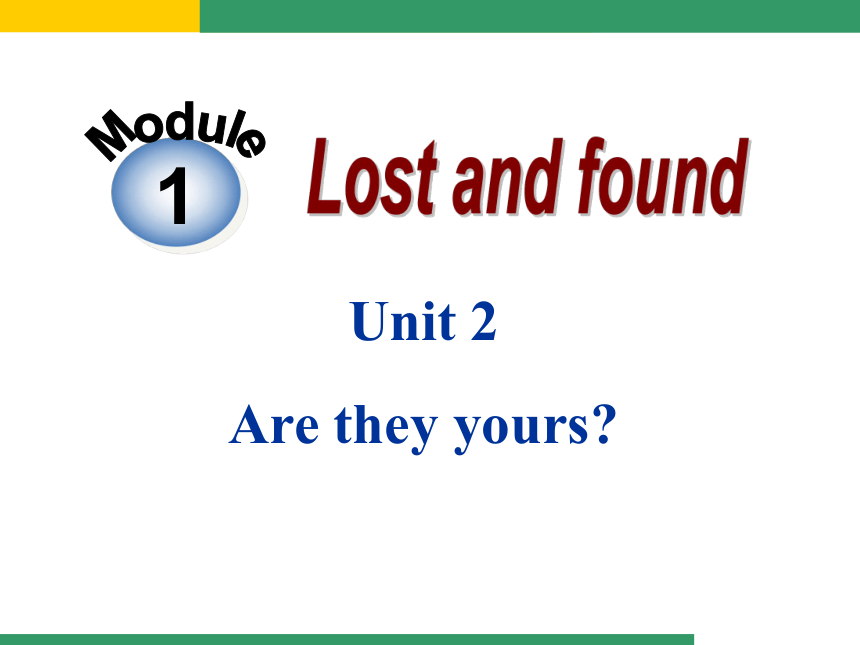
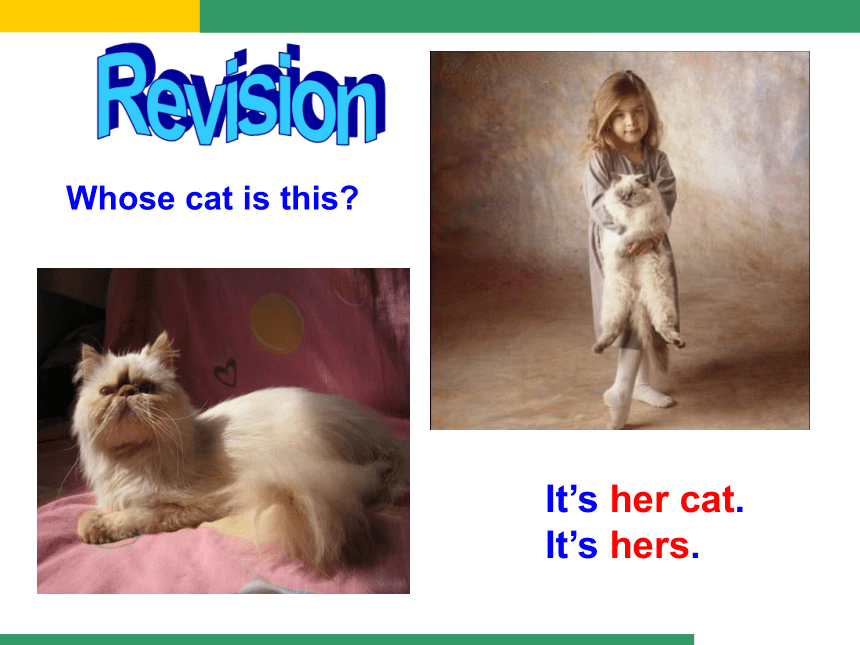

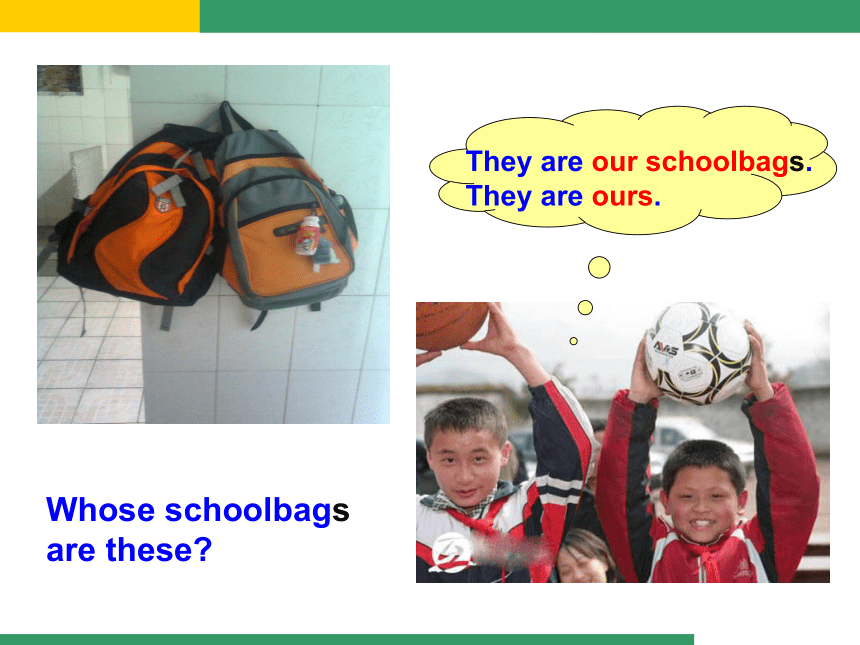
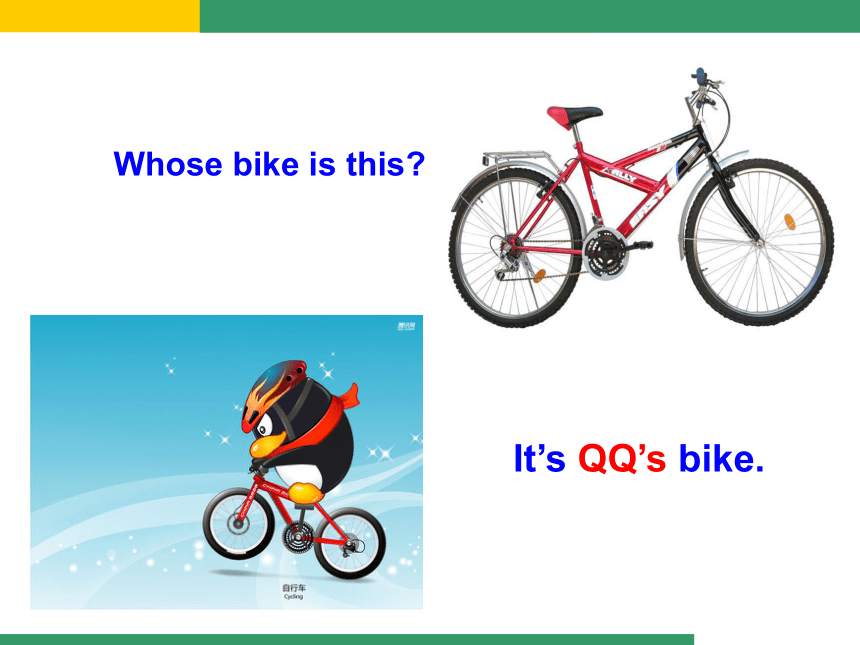
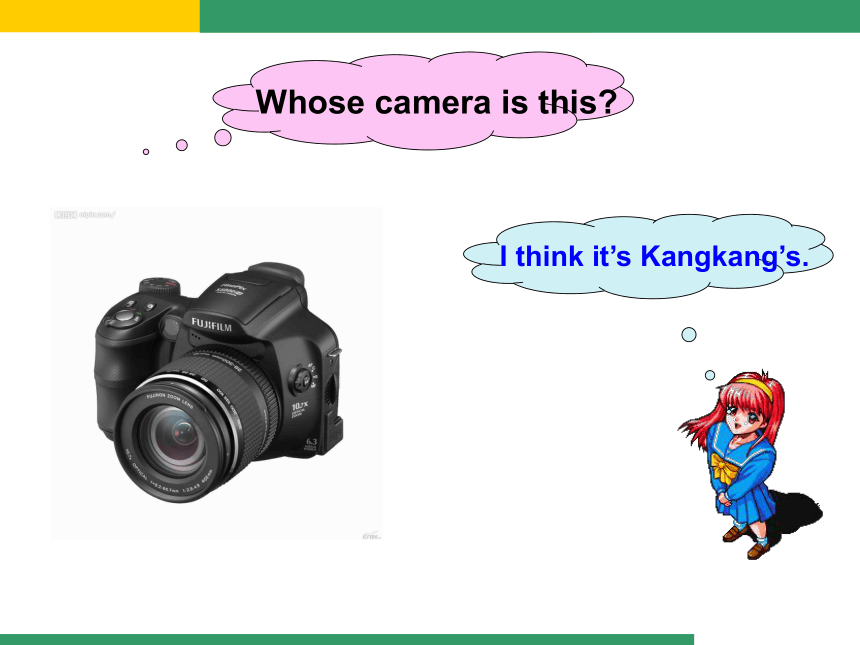
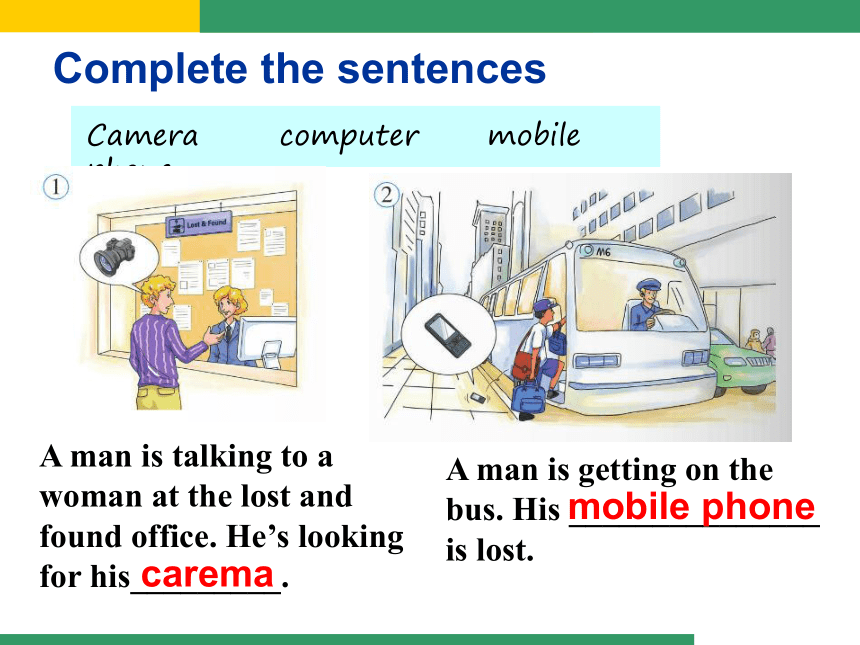

文档简介
课件26张PPT。七年级下册1Lost and foundModuleUnit 2
Are they yours?Whose cat is this?It’s her cat.
It’s hers.RevisionWhose baby is this?It’s his baby.
It’s his.Whose schoolbags
are these? They are our schoolbags.
They are ours.Whose bike is this?It’s QQ’s bike.
Whose camera is this?I think it’s Kangkang’s.Complete the sentencesCamera computer mobile phoneA man is talking to a woman at the lost and found office. He’s looking for his_________.A man is getting on the bus. His _______________ is lost.caremamobile phoneWatch and readLearning to learnReading passages with
interesting facts can help you
understand and remember
English. Try to find passages
with facts to read.Listen again and answer the questions.When do people often lose things?
Why are these lost and found offices
at airports and stations?
3. What do people do at the lost and found office ?
4. What strange things are there at the New York
City Lost and Found Office?1. When do people often lose things?
__________________________________________
2. Why are these lost and found offices
at airports and stations?
__________________________________________
______________________________________When they are travelling or when they’re in a hurry.Because people often leave things on planes,
on trains, on buses and in taxis.Check your answers!
3. What do people do at the lost and found office ?
__________________________________________
4. What strange things are there at the New York
City Lost and Found Office?
__________________________________________
_________________________________They look for things they have lost.A large boat, three dogs, two ducks, a pig and
fifteen kilos of sausages.1. People often lose things when they’re travelling or when they’re in a huarry. 人们在旅行中或匆忙时常丢东西。
in a hurry的意思是“匆匆忙忙地”,是一个介词短语,hurry动词短语用“hurry up”来表示“赶快,赶紧”,还有“(there’s) no hurry”,意思是“不忙,不必着急,有充裕时间……”。
e.g.:
We must hurry up if we want to be there on time.
如果想准时到那里的话,我们就必须动作快点。
There is no hurry, so do it slowly and carefully.
不必赶时间,要慢慢地,认真地完成任务。
Language points2. Hundreds of people come here every day.
每天都有很多人来这里。
hundreds of 表示“好几百,许许多多”, 相当于 lots of,是一个概数, 后面跟着的名词和hundred都要用复数形式, 而 hundred 这个词本身是一个确数,表示“一百”。当hundred之前有一个确切的基数词修饰的时候, 它要使用单数形式。
e.g.:
two hundred students 两百个学生
hundreds of teachers 好多老师
辨析 every day 和 everyday
every day 是副词词组,在句子中间做状语,表示“每天,天天”。
e.g.: We speak English everyday.
everyday是形容词,在句子中只做定语,表示“日常的,每天的”。
e.g.: Let’s learn some everyday English.辨析:everyone 和 every one1、everyone意为“每个人”,只指人,不指物,不与of短语连用。Everyone在句中作主语时,谓语动词要用第三人称单数形式。
Is everyone here today? 今天大家都来了吗?
2、every one既可以指人,也可以指物,可与介词of连用。
Every one of us has a chance to speak at the meeting.
我们每个人都有机会在会上发言。辨析:look for与find1、look for意为“寻找”,指有目的的找,强调“寻找”这一动作。
What are you looking for?你在找什么?
I’m looking for my bike.我在找我的自行车。
2、find意为“找到;发现”,强调“找”的结果,其宾语往往是某个丢失的东西或人。
I’m looking for my bag, but I can’t find it.
我找我的书包,但我没找到。 辨析:talk,speak,tell与say1、talk意为“谈话;讲话”,如果只有一方对另一方说话时,一般用talk to,如果双方或多方交谈时,多用talk with。
2、speak意为“说话;讲话”,后面常接语言。
speak to 意为“和… …谈话、讲话”
3、tell意为“告诉;讲述”
tell sb. sth. 告知某人某事
tell sb. to do sth.告诉某人去做某事
tell sb. not to do sth. 告诉某人不要做某事
4、say 意为“说”,后常跟说话内容。 People in a hurry often (1) ____________ things, and there are (2) ____________ things at lost and found offices at (3) ____________ and (4) ____________. At the New York City and Found Office, there are also some very (5) ____________ things. There are fifteen kilos of (6) ____________
-- are they yours? And how do you lose a (7) ____________ boat on a train?Complete the passage with the correct form.airport hundreds of large lose
sausage station strangelose hundreds ofairportsstationstrangesausage large Writing – read the lost and found notes and write.Lost
My gloves.
They’re blue and
white. Call Tony at
8574 9326.Found
Is this your bag?
Call Betty at 2369
0390.A Possible VersionLost
A blue wallet.
At school.
Call Lingling at XXX.Found
Is this your red bag?
Found at the station.
Call Li at XXX.Rewrite the sentencesThat is his schoolbag.
______________________.
These are her babies.
__________________________.
This is Lily’s skirt.
___________________________.This shirt is Lily’s.These babies are hers.That schoolbag is his.
1. Is this your eraser?
________________
2. It’s not mine.
________________
3. Are these your boxes?
___________________
4. They are not mine.
___________________Is this eraser yours?It’s not my eraser.Are these boxes yours?They are not my boxes.句型转换:1. 大部分形容词性物主代词在后面加 “s”构成名词
性物主代词.有3个特殊情况:
my—mine, his— his, its—its。
2. 形容词性物主代词与名词性物主代词的区别:
前者有名词的含义,后面需跟名词;后者可单独使用,相当于对应的形容词性物主代词加名词。
3. 名词性物主代词作主语时,如果含义是单数,后面的be动词用is;如果含义是复数,那么be动词用are。SummaryHomework1) 每人按要求制作一幅“物主代词卡”。
要求:
①规格:10cm×5cm。
②正面是汉语,反面用英语写出对应的名词性
物主代词和形容词性物主代词。
③两人一组互相看卡片,说出(或读出)与之相对
应的汉语或英语。
2) 三人一组,应用物主代词编写对话并表演。Thank you!
Are they yours?Whose cat is this?It’s her cat.
It’s hers.RevisionWhose baby is this?It’s his baby.
It’s his.Whose schoolbags
are these? They are our schoolbags.
They are ours.Whose bike is this?It’s QQ’s bike.
Whose camera is this?I think it’s Kangkang’s.Complete the sentencesCamera computer mobile phoneA man is talking to a woman at the lost and found office. He’s looking for his_________.A man is getting on the bus. His _______________ is lost.caremamobile phoneWatch and readLearning to learnReading passages with
interesting facts can help you
understand and remember
English. Try to find passages
with facts to read.Listen again and answer the questions.When do people often lose things?
Why are these lost and found offices
at airports and stations?
3. What do people do at the lost and found office ?
4. What strange things are there at the New York
City Lost and Found Office?1. When do people often lose things?
__________________________________________
2. Why are these lost and found offices
at airports and stations?
__________________________________________
______________________________________When they are travelling or when they’re in a hurry.Because people often leave things on planes,
on trains, on buses and in taxis.Check your answers!
3. What do people do at the lost and found office ?
__________________________________________
4. What strange things are there at the New York
City Lost and Found Office?
__________________________________________
_________________________________They look for things they have lost.A large boat, three dogs, two ducks, a pig and
fifteen kilos of sausages.1. People often lose things when they’re travelling or when they’re in a huarry. 人们在旅行中或匆忙时常丢东西。
in a hurry的意思是“匆匆忙忙地”,是一个介词短语,hurry动词短语用“hurry up”来表示“赶快,赶紧”,还有“(there’s) no hurry”,意思是“不忙,不必着急,有充裕时间……”。
e.g.:
We must hurry up if we want to be there on time.
如果想准时到那里的话,我们就必须动作快点。
There is no hurry, so do it slowly and carefully.
不必赶时间,要慢慢地,认真地完成任务。
Language points2. Hundreds of people come here every day.
每天都有很多人来这里。
hundreds of 表示“好几百,许许多多”, 相当于 lots of,是一个概数, 后面跟着的名词和hundred都要用复数形式, 而 hundred 这个词本身是一个确数,表示“一百”。当hundred之前有一个确切的基数词修饰的时候, 它要使用单数形式。
e.g.:
two hundred students 两百个学生
hundreds of teachers 好多老师
辨析 every day 和 everyday
every day 是副词词组,在句子中间做状语,表示“每天,天天”。
e.g.: We speak English everyday.
everyday是形容词,在句子中只做定语,表示“日常的,每天的”。
e.g.: Let’s learn some everyday English.辨析:everyone 和 every one1、everyone意为“每个人”,只指人,不指物,不与of短语连用。Everyone在句中作主语时,谓语动词要用第三人称单数形式。
Is everyone here today? 今天大家都来了吗?
2、every one既可以指人,也可以指物,可与介词of连用。
Every one of us has a chance to speak at the meeting.
我们每个人都有机会在会上发言。辨析:look for与find1、look for意为“寻找”,指有目的的找,强调“寻找”这一动作。
What are you looking for?你在找什么?
I’m looking for my bike.我在找我的自行车。
2、find意为“找到;发现”,强调“找”的结果,其宾语往往是某个丢失的东西或人。
I’m looking for my bag, but I can’t find it.
我找我的书包,但我没找到。 辨析:talk,speak,tell与say1、talk意为“谈话;讲话”,如果只有一方对另一方说话时,一般用talk to,如果双方或多方交谈时,多用talk with。
2、speak意为“说话;讲话”,后面常接语言。
speak to 意为“和… …谈话、讲话”
3、tell意为“告诉;讲述”
tell sb. sth. 告知某人某事
tell sb. to do sth.告诉某人去做某事
tell sb. not to do sth. 告诉某人不要做某事
4、say 意为“说”,后常跟说话内容。 People in a hurry often (1) ____________ things, and there are (2) ____________ things at lost and found offices at (3) ____________ and (4) ____________. At the New York City and Found Office, there are also some very (5) ____________ things. There are fifteen kilos of (6) ____________
-- are they yours? And how do you lose a (7) ____________ boat on a train?Complete the passage with the correct form.airport hundreds of large lose
sausage station strangelose hundreds ofairportsstationstrangesausage large Writing – read the lost and found notes and write.Lost
My gloves.
They’re blue and
white. Call Tony at
8574 9326.Found
Is this your bag?
Call Betty at 2369
0390.A Possible VersionLost
A blue wallet.
At school.
Call Lingling at XXX.Found
Is this your red bag?
Found at the station.
Call Li at XXX.Rewrite the sentencesThat is his schoolbag.
______________________.
These are her babies.
__________________________.
This is Lily’s skirt.
___________________________.This shirt is Lily’s.These babies are hers.That schoolbag is his.
1. Is this your eraser?
________________
2. It’s not mine.
________________
3. Are these your boxes?
___________________
4. They are not mine.
___________________Is this eraser yours?It’s not my eraser.Are these boxes yours?They are not my boxes.句型转换:1. 大部分形容词性物主代词在后面加 “s”构成名词
性物主代词.有3个特殊情况:
my—mine, his— his, its—its。
2. 形容词性物主代词与名词性物主代词的区别:
前者有名词的含义,后面需跟名词;后者可单独使用,相当于对应的形容词性物主代词加名词。
3. 名词性物主代词作主语时,如果含义是单数,后面的be动词用is;如果含义是复数,那么be动词用are。SummaryHomework1) 每人按要求制作一幅“物主代词卡”。
要求:
①规格:10cm×5cm。
②正面是汉语,反面用英语写出对应的名词性
物主代词和形容词性物主代词。
③两人一组互相看卡片,说出(或读出)与之相对
应的汉语或英语。
2) 三人一组,应用物主代词编写对话并表演。Thank you!
同课章节目录
- Module 1 Lost and found
- Unit 1 Whose bag is this?
- Unit 2 Are they yours?
- Unit 3 Language in use
- Module 2 What can you do ?
- Unit 1 I can play the piano
- Unit 2 I can run really fast
- Unit 3 Language in use
- Module 3 Making plans
- Unit 1 What are you going to do at the weekends?
- Unit 2 We're going to cheer the players.
- Unit 3 Language in use
- Module 4 Life in the future
- Unit 1 Everyone will study at home
- Unit 2 Every family will have a small plane.
- Unit 3 Language in use
- Module 5 Shopping
- Unit 1 What can I do for you?
- Unit 2 You can buy everything on the Internet
- Unit 3 Language in use
- Module 6 Around town
- Unit 1 Could you tell me how to get to the Nationa
- Unit 2 The London Eye is on your right.
- Unit 3 Language in use
- Revision module A
- Module 7 My past life
- Unit 1 I was born in a small village.
- Unit 2 I was born in Quincy.
- Unit 3 Language in use
- Module 8 Story time
- Unit 1 Once upon a time….
- Unit 2 Goldilocks hurried out of the house.
- Unit 3 Language in use
- Module 9 Life history
- Unit 1 He left school and began work at the age of
- Unit 2 He decided to be an actor.
- Unit 3 Language in use
- Module 10 A holiday journey
- Unit 1 What did you do?
- Unit 2 This morning we took a walk.
- Unit 3 Language in use
- Module 11 Body language
- Unit 1 They touch noses!
- Unit 2 Here are some ways to welcome them.
- Unit 3 Language in use
- Module 12 Western music
- Unit 1 It's so beautiful!
- Unit 2 Vienna is the centre of European classical
- Unit 3 Language in use
- Revision module B
